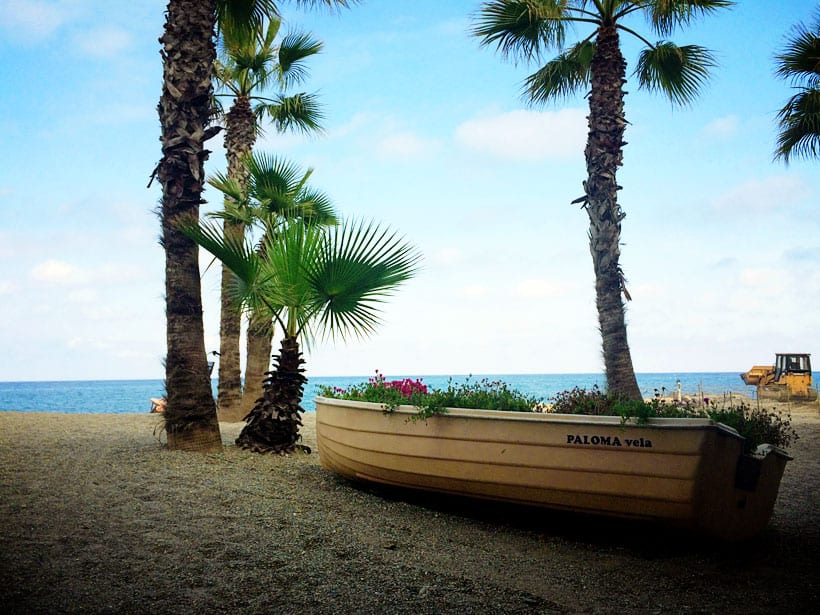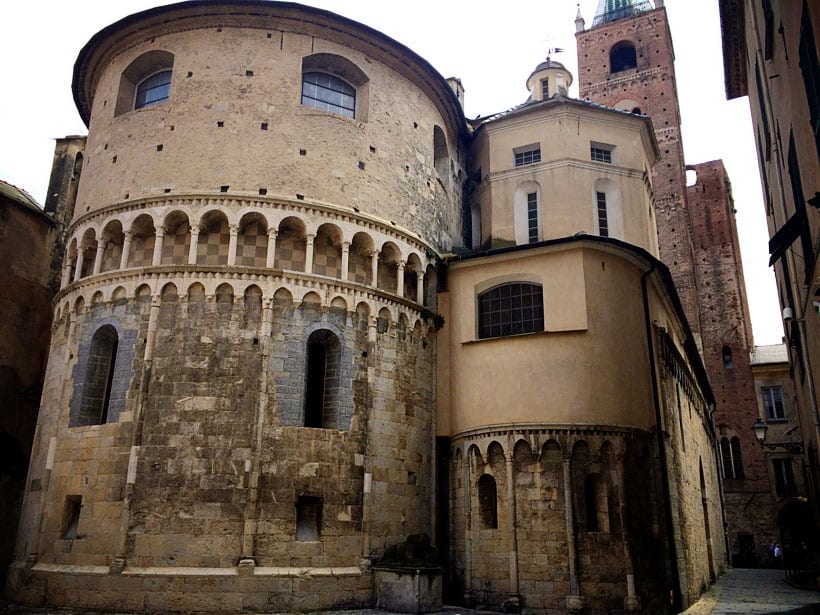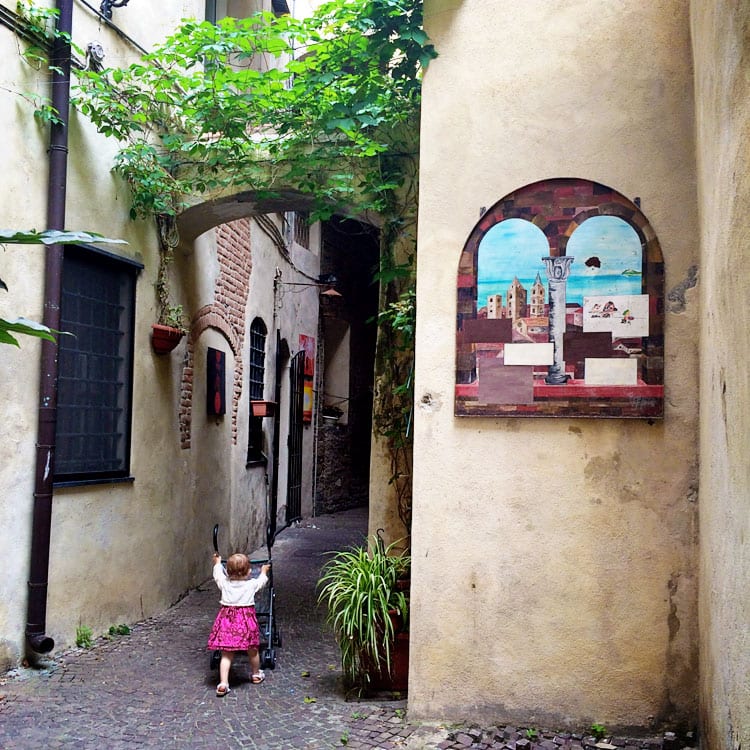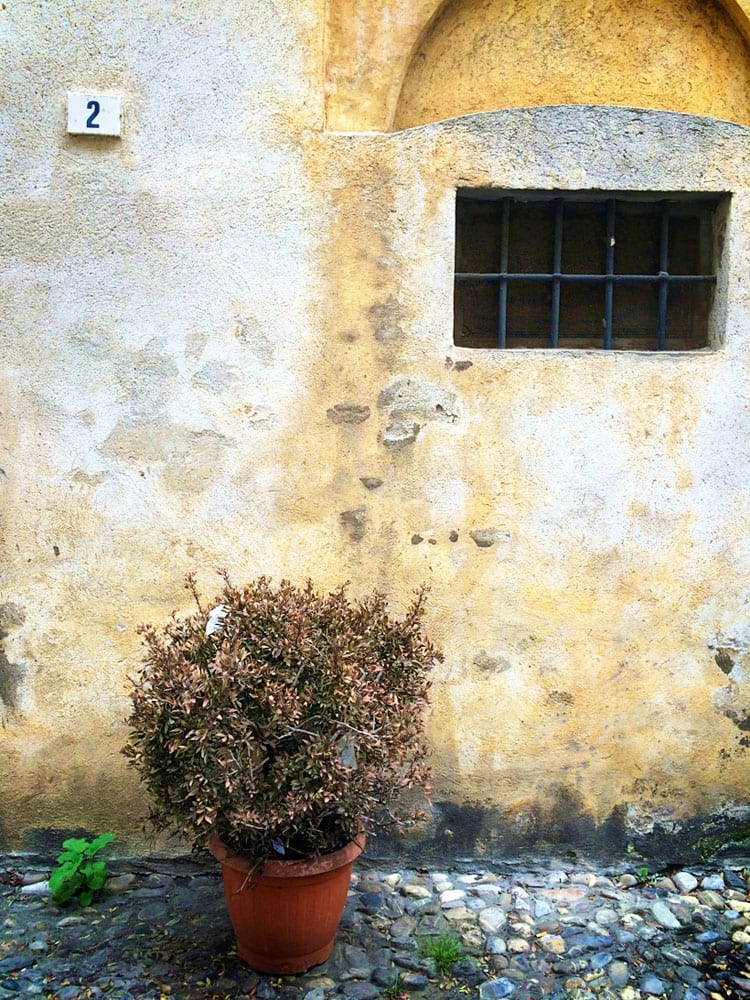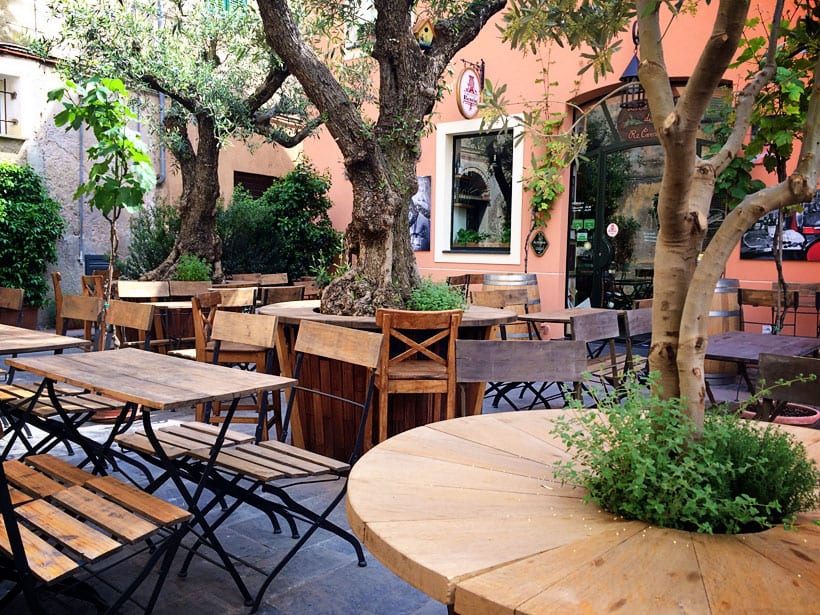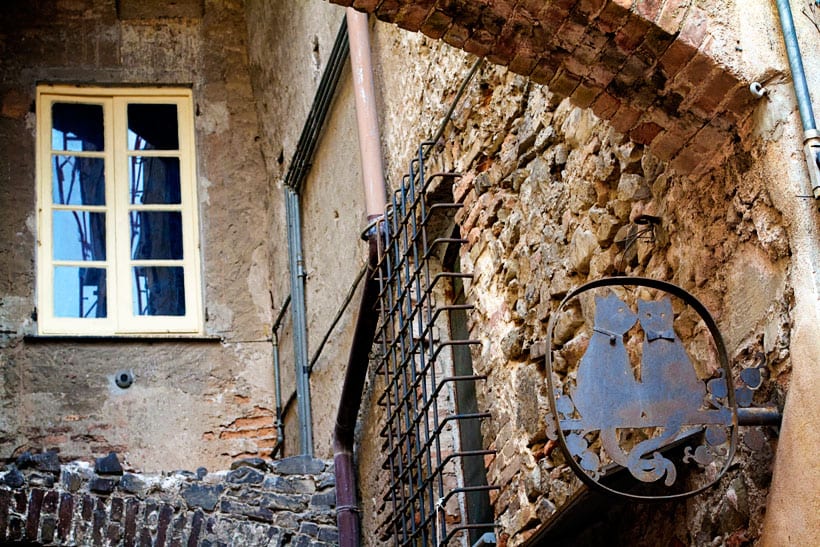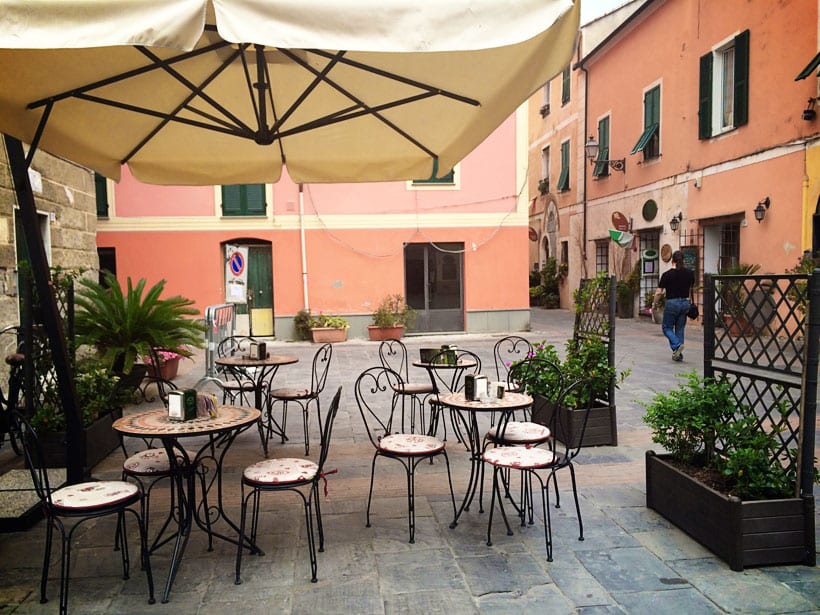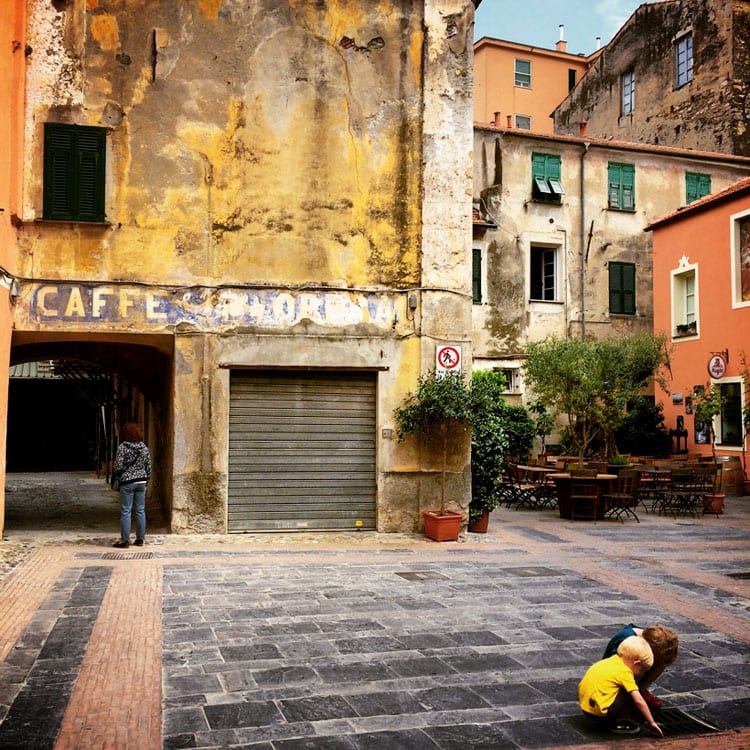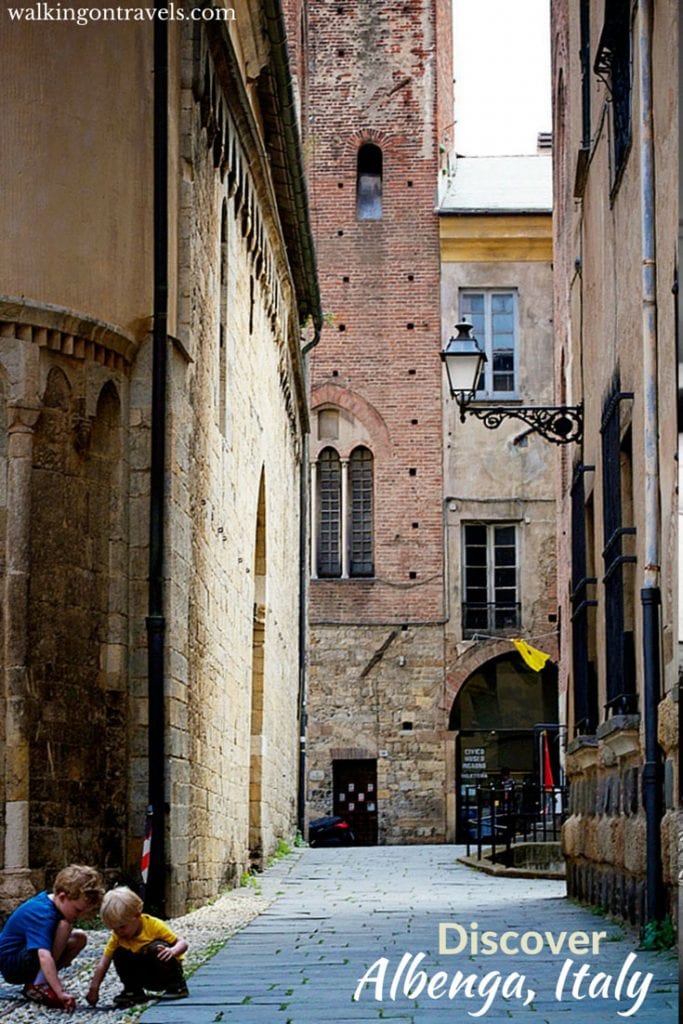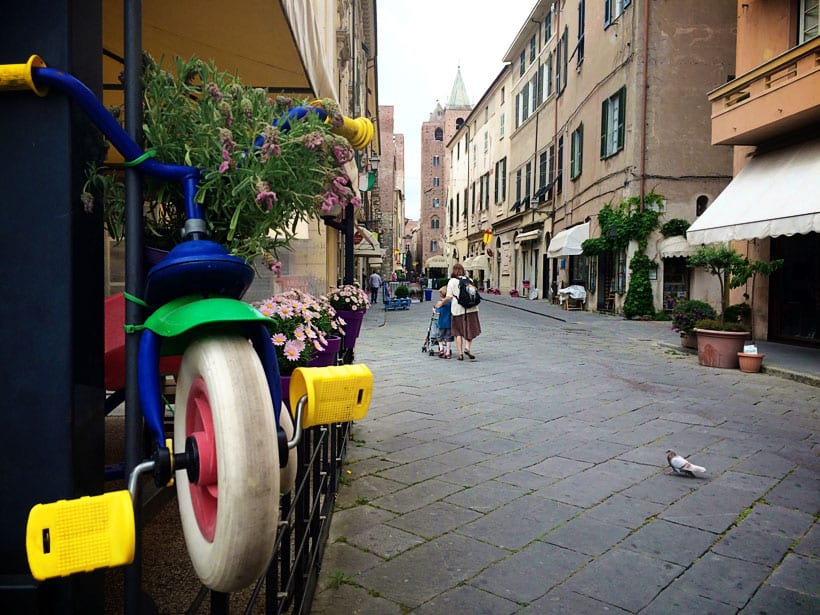One of the great pleasures of travel, for me, is finding someplace that I feel has yet to be “discovered” – not yet on the tourist loop, barely in any book or on anyone’s radar. Albenga is just such a town – located west of Genoa, on the Ligurian coast, it’s got ancient roots weaving through a modern city, with a spectacularly well-preserved medieval city center.
Nicknamed “City of 100 Spires,” the medieval towers that dot the city center are frequently referred to as “Liguria’s San Gimignano.” Thankfully the busloads of daytrippers have not shown up yet, so you can still explore this gem in relative quiet.
Founded in pre-Roman times, Albenga held an important position along the Via Julia Augusta, which connected Rome to the southern Gaul (France) during the 1st century AD. After the collapse of the Empire, Albenga was sacked by the Visigoths in the 5th century, but over subsequent centuries re-established itself as a force within the agricultural sphere.
By the Middle Ages, the prosperous town boasted hundreds of towers, reflecting the wealth of its owners; its fortunes waxed and waned over the following centuries, and by the early 20th, it had fallen into the shadow of other, more picturesque coastal villages.
However, Albenga remains a busy destination for Italian families – campgrounds line the coastal drive, with wide gravelly beaches offering every kind of waterfront entertainment, from sunbathing to diving and deep-sea fishing excursions.
The modern city is a bit sprawling, with attractive, tree-lined streets and large apartment buildings at the center of town housing shops, cafes and businesses. The medieval city center is the real treasure: built on the original Roman city grid, and reusing many of the Roman foundations for its own important buildings, the streets are pleasant to wander for a day or two.
The Cattedrale San Michele is the spiritual center of the town, with a lively plaza flanking it. The cathedral itself is built on Roman foundations, and shows traces of the architectural transformation from Romanesque to Gothic. Just to the north of the cathedral is the loggia of the town hall, which is the entryway to visit the spectacular Baptistry.
The octagonal Baptistry was originally built in the 5th century and features Byzantine details as a result. It had survived a variety of misfortunes over the years, but none more so than the 19th century “restoration” which destroyed it’s unique terra-cotta tube construction. Fortunately, the Byzantine mosaics survived, featuring vivid symbols of the bible and the gospels, shimmering in electric blue tesserea.
The excellent Museo Diocesano features sacred art, and the Museo Navale is centered on the naval history of the region – from the phoenicians, to the ancient romans, to contemporary maritime technology. The extraordinary display of ancient amphorae alone is worth considering.
The city itself is beguiling, with infinitely wanderable medieval streets that hide delicious courtyards at every turn. Cobbled and silent, small squares entice dallying strolls. We loved Piazza San Francesco, at the back of the church, featuring a cupcake cafe and a gelateria; banners strung throughout seemed to advertise a slingshot festival that we had sadly just missed.
In the hidden piazza just east of Piazza San Francesco, we spied a delightful osteria featuring charming tables built of oak barrels, with olive trees and lush planters. Signs all over town advertised the osteria’s skill with local artichokes. Sadly it was closed when we were there – but that gives another reason to go back!

La Associazzione Tra Le Torre is an artists organization in town, helping curate visual art throughout the community. When we visited in May 2015, the Giro d’Italia had recently passed through, and creative installations featuring bicycles were on full display. They also curate the Carruggugi degli Artisti, a tiny path off Via Bernardi Ricci across from the municipal loggia, featuring local artists work. It’s a perfect setting for a tiny art lover to explore quiet cobbled streets.
Overall, we loved visiting for just a few hours, but could easily imagine staying for a number of days. The laid back vibe, rich diversity of cultural, historical and culinary explorations, and easygoing beachfront scene all combine to make Albenga a very accessible “must see!”
Know before you go:
- There are plenty of diversions for the whole family, including beach delights, antique village strolls, art discovery and more. The area is very friendly towards visitors, featuring menus in English, German and French. Lots of hotels, apartments and rooms for rent pepper the city; campgrounds line the shore area.
- A few hour visit is too short – plan a full day to be able to enjoy the historic sites as well as a languorous lunch or dinner.
Where to eat:
- Hosteria Sutta Ca – a Slow Food restaurant just behind the cathedral on Piazza San Francesco, the family run Hostaria focuses on traditional Ligurian specialties, and features seasonal treats such as the regional purple artichokes and asparagus. House made foccacia is served right away; hand cut tagliolini al pesto sauce is a regional specialty; the complex, herbed coniglio alla ligure is a flavorful rabbit stew made from grandmothers recipes. The owners are fantastically kid friendly and welcoming – they wanted to know all about our kids, where we had come from, what we thought of their village.
- Muffins and Cakes Tea Shop – serving proper high tea, as well as cupcakes, muffins, fruit cakes and pies, and all variety of teas and coffees, this little cafe on Piazza San Francesco is a lovely place to while away the day with some excellent people watching
- Caffe Opera Gelateia also located on Piazza San Francesco, this little gelateria offers heaping scoops and a variety of beverages as well.


